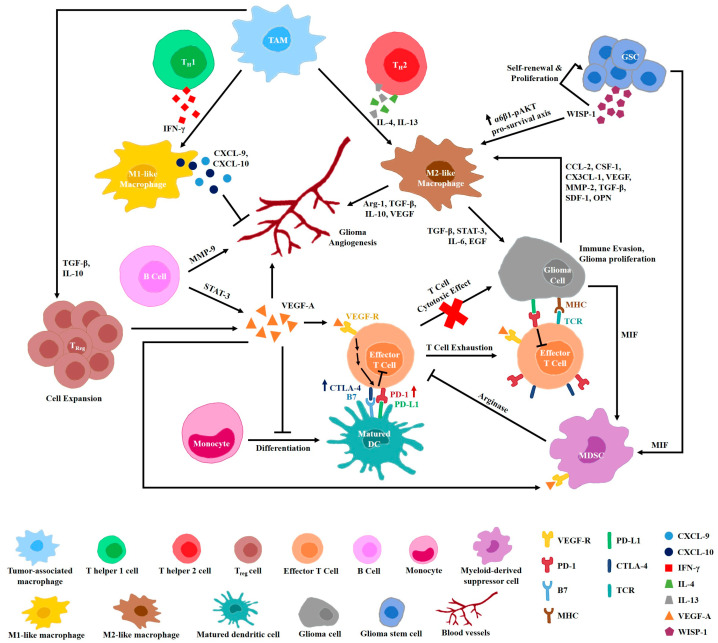Figure 2.
Crosstalk between immune cells and angiogenesis in glioblastoma. Glioma angiogenesis is the result of complex interactions with the immunosuppressive TME that consists of glioma cells, GSCs, and the various immune cells. M1-like and M2-like macrophages are polarized via TH1-derived IFN-γ and TH2-derived IL-4/IL-13, respectively, to mediate angiogenesis. The expansion of Treg releases VEGF-A to sustain tumor vessel growth. B cells modulate angiogenesis directly by producing STAT-3-dependent VEGF-A and MMP-9. VEGF signaling hinders DC maturation and its antigen presentation, suppresses effector T-cell functions via inhibitory immune checkpoint stimulation, and enhances MDSCs immunosuppressive activity, leading to glioma immune evasion. Macrophage migration inhibitory factor (MIF) secreted by GSCs and glioma cells acts on MDSCs-driven T-cell dysfunction. An M2-like TAMs phenotype can be further promoted by GSC-derived WISP-1 via the integrin α6β1/pAKT axis. Crosstalk between glioma cells and M2-like TAMs via various chemokines and cytokines occurs to enhance immune suppression and angiogenesis, as well as tumor cell proliferation.

